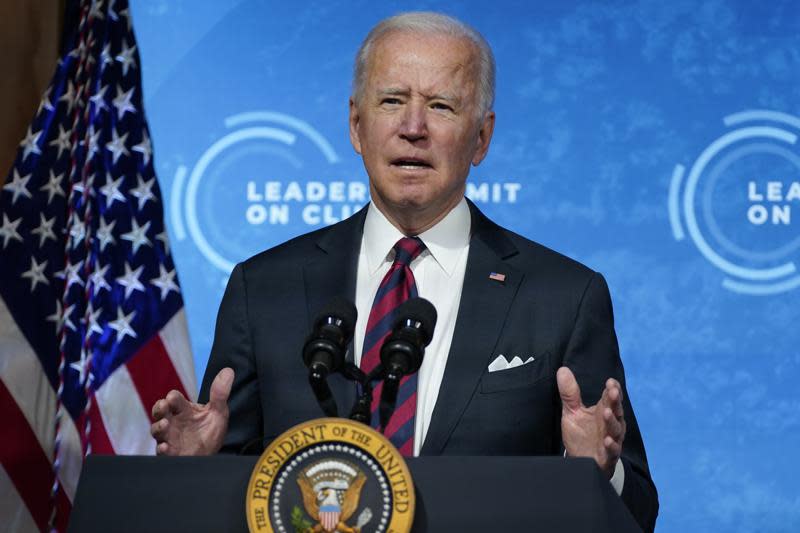Joe Biden’s climate goal is a ‘moonshot’ and we won’t get there without the private sector

Last month, the Biden administration announced America’s new commitment, the National Determined Contribution (NDC) to cut US emissions by 50 to 52 per cent below 2005 levels by 2030. This announcement is being described as a moonshot, a monumental challenge. Let’s examine that.
Yes, it’s ambitious. Yes, it’s the boldest climate goal we’ve ever set, but the honest truth is that this target still falls short of a 1.5C compatible 2030 target. So it puts us on the path to the moon, but it doesn’t make us land. Setting the goal is a necessary first step - now we have to not only meet it but science tells us we must exceed it. We as a country need to reduce our emissions faster, and convince other countries to join us. To succeed, the Biden administration needs to leverage every ounce of political leadership and rebuild America’s authority on the global stage. But even if they do, we won’t get to the “moon” without the private sector’s full engagement and innovation.
The natural world is screaming at us, and what we as a society do over the next five years could very well determine the future of humanity. Incremental progress is no longer a viable option. We need to completely rebuild our electric grid, our built environment, our modes of transportation, the way we grow our food, and the way we manufacture and consume products. Every corner of our economy is going to have to modernise and transform itself for the clean energy future, and the global competition to innovate, manufacture and deploy the technologies of the future is heating up.
At the same time that the federal government finally is ready to move on the clean energy transition, the private sector must get ready to go. The government launches us towards the sky, but the private sector has to make sure we have the fuel needed to touchdown. We know that our future health, safety, and wellbeing have a price tag in the trillions. The private sector needs to build off the framework that the federal government sets to invest the trillions needed to tackle our climate crisis and lead the world again. To catalyse the private sector as a partner, the government needs to invest in infrastructure, create the rules, fund the research, and make worthwhile incentives. The American Jobs Plan is a step in the right direction, but there’s a lot more to do to reach the scale that we need to meet and surpass the 50 to 52 per cent goal. Transformational change demands true collaboration between the public and private sectors.
This is not the first time American business has innovated and transformed our economy rapidly thanks to an initial investment from the government. The private sector was the economic muscle to the government’s backbone of our global strength and eventual victory in World War II, but the government first had to demand that factories be focused on the war effort. More recently, we saw Tesla emerge from Tarp clean energy investments. Tesla, originally a small startup, is now valued 10 times greater than GM, an industry goliath, and produces 25 times more electric vehicles. The private sector drives American productivity, but the impact often depends on prior government action. Government will need to set the rules, help fund the research, and provide incentives (and penalties) to ensure the private sector invests in the future instead of maintaining business as usual.
We have seen in California, that government-issued rules create a clear framework for how companies should operate in line with our societal goals. It’s happening, but it needs to happen faster and that means overcoming entrenched interests. Clean energy standards, clean cars standards, and sector specific targets with annual benchmarks will accelerate the cost realities that are already occurring.
Within the rules of the road, the private sector needs to figure out new ways of doing. Innovation isn’t free, and the government’s investment in research and development is a vital part of America getting back to leading the world. The research and development investments in the American Job Plan is incredibly exciting, and we need to be adamant that any effective legislation that’s going to kickstart the private sector needs to fund innovation.
Companies will always think about their bottom lines first and foremost. So the best way to move the private sector is to make sure that what’s best for their bottom line is also what’s best for the planet. The movement we’ve started to see from the private sector is coming because the cost curves are already starting to switch. Government action will accelerate this trend. With the right incentives to accelerate emissions reductions, along with the elimination of the vast array of existing fossil fuel subsidies, the private sector will move - and I bet you they move faster than any of us would expect.
Together, America’s public and private sectors are capable of tackling our greatest challenges. We’ve seen it happen before, and we are already seeing the ground work for it now. We are at a crucial moment where wecan tackle our climate crisis. Now it’s all about how we can do it fast enough. The answer is by doing it together: public and private sector.
Read More
Climate crisis: Melting glacier reveals First World War cave shelter and trove of artefacts

 Yahoo Finance
Yahoo Finance 